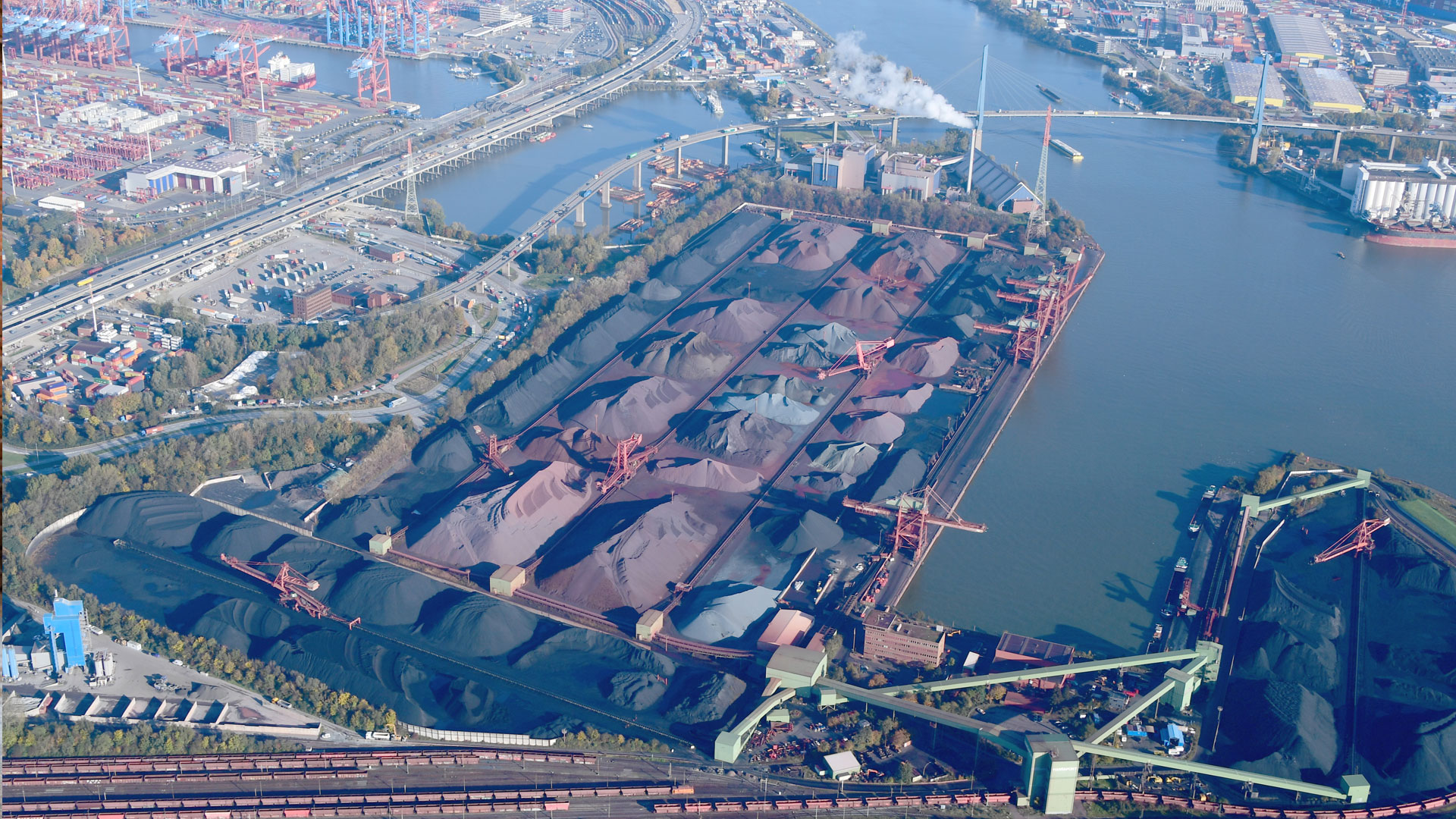Schiffsbezogene Hafenumfuhren sind der richtige Weg
With a new service for shipboard transhipment in port, available freight capacity on feeder vessels is being cleverly exploited to both relieve Hamburg’s ...

Many processes at Hansaport – such as data exchange for the production of freight documents – have already been digitalized for a long time. Yet until just recently, internal and external communication at Germany’s largest handling terminal for coal, ore and building materials was a lengthy process. For instance, data on such standard processes as an order for a specific quantity on a specific train was exchanged by e-mail or telephone, reports Michael Schwarz, deputy head, operations.
One example was that data was written out or copied, with several copies being made for distribution to loading stations. This was once again entered in two systems, each involving copying and Excel lists. Transmission errors were a possibility there,” says Schwarz. For instance, giving details of the wrong type can cause substantial harm for our customers. The objective here was obvious: To simplify and improve processes, data was to be entered only once in the system, and this by the person initiating the order. Finally, all those in the logistics chain entitled to
do so can use this database externally and internally. “We therefore opted for an online portal on our website,” remembers Schwarz. Initial discussions took place at the end of 2019, then a four-strong project team from an IT provider plus two Hansaport staff went to work. Apart from tackling technical IT questions, the main challenge was: Who really requires which data? We had naturally tried in advance to illustrate the process chain, but a great deal is only clarified in the course of such a project, or ideas emerge for simplified process flows, explains this operations expert.
Processes have now been digitalized for six months. The IT solution implemented considerably minimizes the risks of transmission errors, – especially in stress situations in the control centre, among other places. “When an order is received there, we use the platform to specify the storage location,” says Schwarz. And communication during loading has also become far simpler: Controllers see the real- time status in each case, so that the previous constant need to telephone is no more. At the loading stations, paper and manually conveyed instructions are no longer needed. “Data now only needs to be called up,” says a most satisfied Schwarz.
The prototype, just now being exhaustively tested with our colleagues from Salzgitter to eliminate still existing defects, now indicates which materials should be loaded from which storage locations, with which equipment and on to which railcars, and when. Hansaport workers engaged in these activities were involved in the test stage that lasted several months. Their opinions rounded off the views on the basis of which the challenge was viewed.
Already having been able to amass extensive experience with processes of change in the course of the automation of Hansaport, such staff are open-minded towards the new system. It was rapidly recognized here that adaptation of the system would reduce expenditure and eliminate errors without jeopardizing jobs.
To allow for their requirements and experience, customers were also involved at a later stage. Movement clerks are now able to feed in all relative loading data such as the time, type, quantity and weight in the course of placing their order. Hansaport then undertakes a manual check, but this too is to be digitalized in future.
The advantage for customers is that they can, at any time, scrutinize data and status and alter their order provided this is not being processed. “We provide them with a kind of live image,” emphasizes Schwarz. Depending on the customer, instead of manually producing a table daily or weekly, generating and despatching a PDF based on this, they can now retrieve these details around the clock.
The development team is satisfied with what has been achieved so far: “We are well on the way and the project has almost been completed.” In spring 2023 the idea is to develop a similar system for inland waterway vessels, using the new rail module as the basis. The first steps towards that have already been taken. What remains true at Hansaport is that ‘There’s no such thing as a completed system. Ours here are continually being further developed.”
A further example of this is the tie-up between Hansaport systems and DB – German Rail’s train localization system. Yet the aim is to make the facility even more efficient so as to further optimize handling processes. “This project fits into the digitalization and development activities of Salzgitter, our parent company,” adds Schwarz. “On all developments, our principal shareholder’s fresh vision and strategy strongly motivates us to continue working alongside our customers and partners on further development of our systems and services going forward.”
Work is therefore already being done today on the target definition for the next system adjustments. Schwarz comments: “In future our customers should be able to have our berth utilization data flow automatically into their systems through an interface, also to electronically nominate a seagoing vessel, for example. Therefore, we are approaching our uppermost goal of achieving transparency across the entire supply chain.”